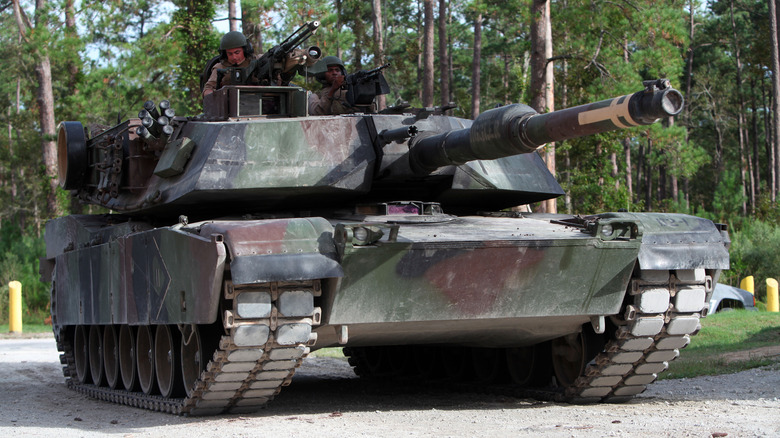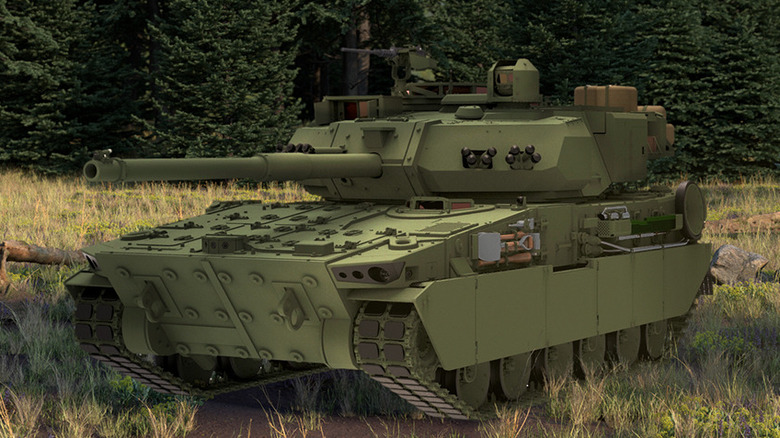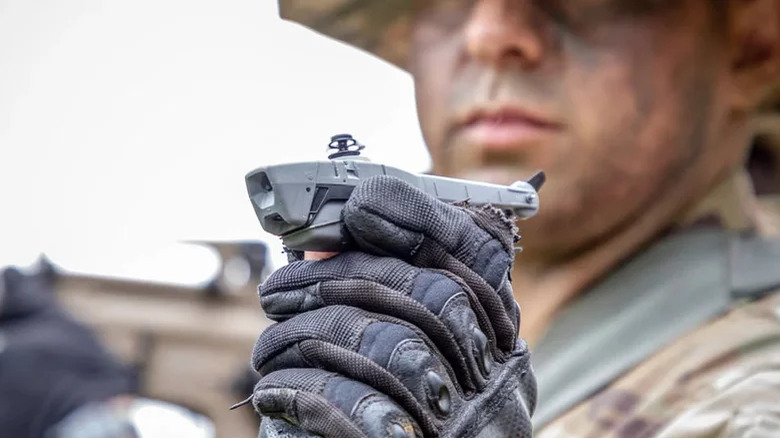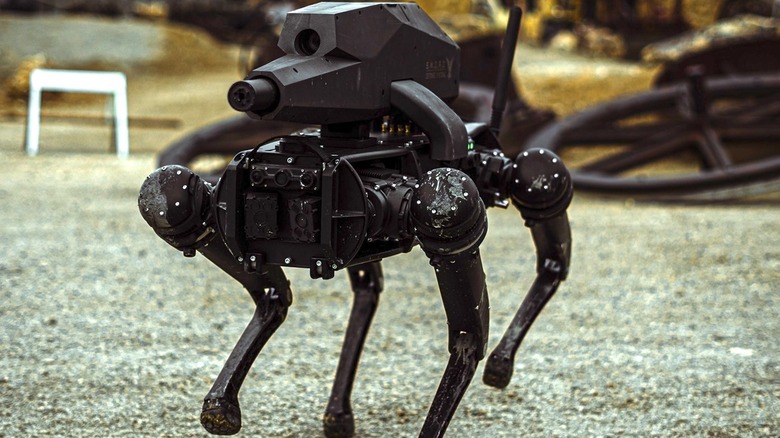The U.S. Army Releases A Brand New Vehicle For The First Time In 4 Decades
The U.S. Army's new vehicle is a force to be reckoned with on land, but it's not exactly the tank that some might be expecting. When it comes to hulking war machines, America's own M1 Abrams Main Battle Tank usually comes to mind. Despite undergoing various improving iterations over the years, the Army's main battle tank's design remained relatively the same. In fact, it's been more than four decades before the military even came up with any new vehicle design ... until recently, that is. In June, the U.S. Army announced the latest developments of its Mobile Protected Firepower program, which will utilize a new armored vehicle with a design that's quite groundbreaking ... literally.
This lightweight armored vehicle will be designed and manufactured by General Dynamics Land Systems, the same folks who came up with the original M1 Abrams tank. Like the luxurious yet monstrous Rezvani Tank X SUV, the MPF appears like a tank or at least a more modernized alternative to it. However, it's not exactly meant to replace the military's Main Battle Tank. If that's the case, then what exactly is the U.S. Army's new vehicle for? Well, according to the Army, it has a lot to do with adaptability, efficiency, and most of all, strategy.
What is a Mobile Protected Firepower vehicle?
The Abrams tank's specs sheet shows a 70-ton behemoth equipped with a 1,500-horsepower turbine engine and 120mm cannon. While they're extremely durable, they're also heavy and slow to deploy. MPFs, on the other hand, are supposed to be lighter 30-ton vehicles equipped with smaller 105mm cannons (via U.S. Army). MPFs will be serving as support for Infantry Brigade Combat Teams (IBCT) — the military's light ground units. These vehicles are meant to supplant the Marine Corps' eight-wheeled light armored vehicle — the LAV25 — albeit using tank-like tracks instead of tires, with GD giving them modern diesel engines and enhanced thermal viewers.
Sure, it might not fend off full-sized tanks, but that's not what MPFs are about. The proposal emphasizes that the key here is being light, as MPFs are supposed to have the armaments of a tank yet still be compact enough to be airlifted onto the battlefield and maneuvered in tight environments.
Warfare is changing, and equipment is catching up
It's a reflection of the fact that modern warfare is a long way from the sort of battles that saw tanks first deployed in World War I. Enormous, ground-based military encounters may have dominated the first and second World Wars, but these days it's as much about precision and technology as it is having the biggest guns on the toughest vehicles.
Indeed, some of the most capable weapons are ones the enemy may not ever see. High-tech microdrones are increasingly finding their way to the battlefield, allowing tacticians to get a remote view of what's happening without putting human teams in any greater danger. Capable of roaming more than a mile from their operators, and flying at speeds of up to 11 mph, they may measure little more than a Sharpie but their tactical value can be incalculable.
Their bigger war drone siblings can then be used to deliver incredibly destructive payloads with pinpoint accuracy. That is, assuming whoever they're trying to bomb doesn't have anti-drone protection. While jamming the signal between the operator and the unmanned aerial vehicle is one option, another takes a far more bombastic approach: the Vampire — or Vehicle-Agnostic Modular Palletized ISR Rocket Equipment — for example is currently being supplied to Ukraine's military by the U.S. Department of Defense, and is capable of automatically tracking and destroying enemy drones.
Some things you need a tank for
Robotics, meanwhile, are also being tapped to play a bigger role in defense. While it may be better known for its smartphones and TVs, Samsung has a division once responsible for machine gun-toting robot turrets deployed in the demilitarized zone (DMZ) that splits the Korean peninsula. We've also seen robot dog style models that can carry their own weapons such as sniper rifles.
That's not to say there's no place for new models built to more traditional patterns, like the Mobile Protected Firepower: its concept is a little like Cobra Kai's motto: strike first, strike hard. That means dispatching smaller enemy forces, armored vehicles, and defensive bunkers swiftly and efficiently, gaining the upper hand before enemy forces can even react. As for its name, MPF is merely a platform that fits the vehicle's description, but the U.S. Army is said to give its new vehicle design a proper name in October (via Popular Science). Expect next-generation tanks to be on a diet when the military implements its first MPFs by late 2025.



